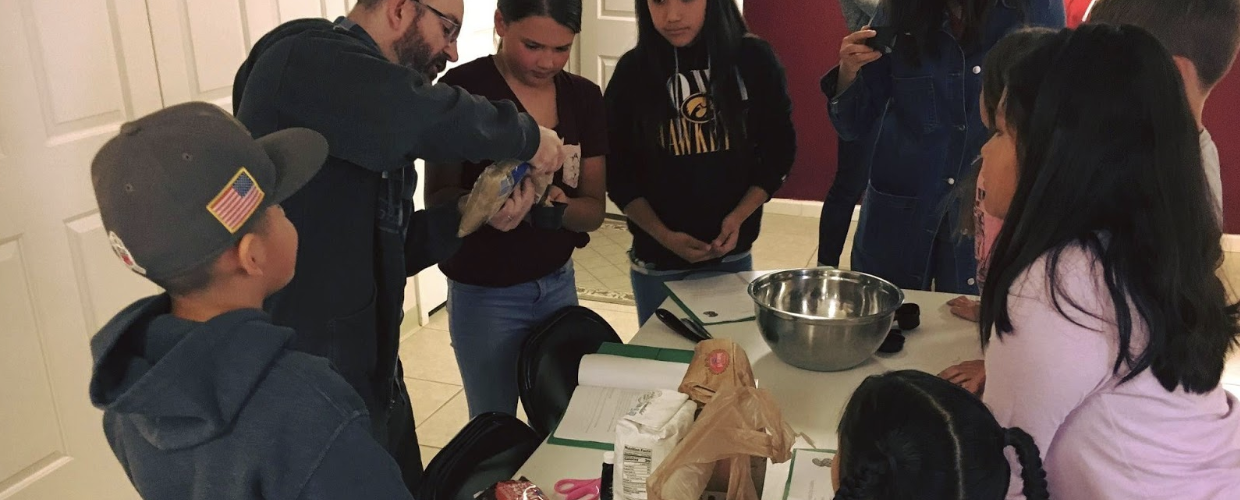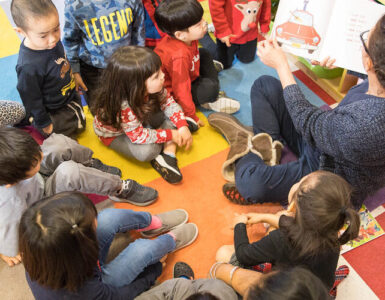Last week I had the opportunity to see a new private microschool out on the San Carlos Apache Indian Reservation east of Phoenix. It’s a great example of what can happen when we empower teachers and families.
Arizona, like many states, has a difficult history regarding the education of Native American children that sadly includes forced assimilation at boarding schools. More recently we’ve seen instances of Bureau of Indian Affairs schools in Arizona spending at stratospheric levels but having kids score as low as the first percentile on national tests. The Nation’s Report Card shows over time progress for Arizona’s Native American students, but still has the largest achievement gap in the state.
A two hour drive east of Phoenix, students in the San Carlos area have few schooling options. Charter schools have a difficult time scaling in rural areas and students on many reservations do not have as much access to them as urban students. Perhaps because of the experience of being forced to attend a particular school, Arizona tribal regions (uniquely) voted to expand Empowerment Scholarship Account (ESA) eligibility to all Arizona students in the 2018 vote on Proposition 305. Unfortunately, that measure needed statewide approval to take effect, and it ultimately fell short on election day.
San Carlos Unified School District has both an elementary and a secondary school, both of which earned an “F” under Arizona’s school grading system. GreatSchools lists the proficiency rates on AzMERIT at 6 percent and 12 percent in English and Math respectively at the district elementary school and 3 percent and 2 percent at the secondary school.
This unfortunate pattern is consistent with the test scores of many low-performing school systems, where proficiency rates start low and get worse in the upper grades. This is in part because grade level material gets progressively more advanced, leaving students in poorly performing districts increasingly left behind. The debate could rage endlessly over the degree to which to hold the district responsible for the low scores of students, but whether the district is the “problem” or “part of the problem,” it is clearly not currently the solution Apache children need. The school achieved these results despite spending far above the statewide average on a per pupil basis.
There are no simple answers, but there is hope for a brighter future.
Former Arizona Senator Carlyle Begay of the Navajo Nation carried legislation years ago to make students on Arizona’s Native American Reservations eligible for the ESA program. This January a small group of San Carlos students availed themselves of the ESA opportunity, creating a new small private school, Prenda Microschool. Supporters of the school raised $5,000 to furnish a classroom and buy laptop computers for the students. The school is using a software system that will allow them to track the academic achievement and gains of students.
Recently I heard an Arizona veteran teacher who has been in the classroom for 44 years (!) call into a radio program. One of the things he said was that the main problem with teaching these days is not the financial side, which he describes as always having been tough. Rather he noted that the joy has been strangled out of the profession. This is not a problem at Prenda Microschool. In the above photograph, students are taking advantage of the opportunity to learn 3-D printing from a visiting Stanford graduate student. The Apache students designed and then printed objects and seemed to have a blast doing it.
Critics of school choice sometimes claim that reform is being done “to them” rather than “with them.” This is also not the case at Prenda Microschool. The school’s teacher is a San Carlos tribal member and long-time resident and the school operates out of a community church.
In a song, Janis Joplin instructed us that “Freedom’s just another word for nothing left to lose.” This community has little to lose and much to gain in the active exercise of their freedom. Many obstacles lay ahead, and the future of their fledgling school community remains uncertain. Don’t however make the mistake of betting against them—our state desperately needs these and other students to flourish.
















Add comment